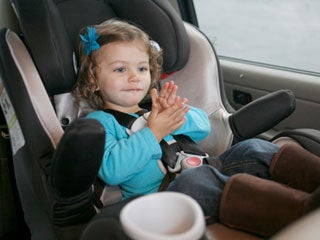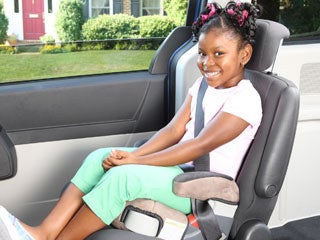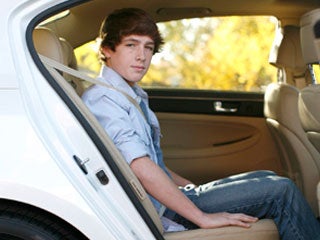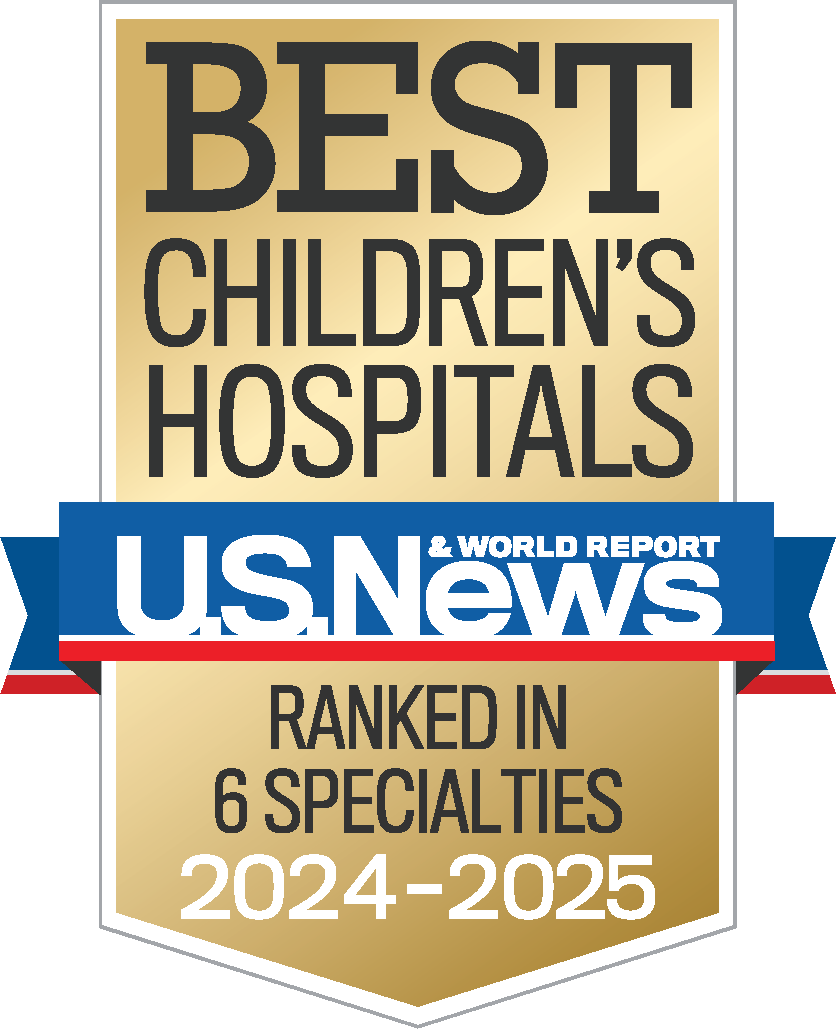Best Practices
 Best Practices for Rear-facing Car Seats
Best Practices for Rear-facing Car Seats
- All children should ride in the back seat until age 13. Babies should ride in rear-facing seats until they meet the maximum weight and height limit of their car seat. This is because rear-facing seats offer infants the best protection. During a crash, rear-facing seats support the head and spread the crash forces across the infant's entire back while protecting the head and the spine. View the Proper Seat Use Chart.
- Keep your child in rear-facing safety seat as long as possible.
- Never place a rear-facing child safety seat in the front seat of a vehicle with an active passenger side air bag.
View the Quick Tips for Rear-facing Car Seats
 Best Practices for Forward-facing Safety Seats
Best Practices for Forward-facing Safety Seats
- All children should ride in the back seat until age 13. Babies should ride in rear-facing seats until they meet the maximum weight and height limit of their car seat. This is because rear-facing seats offer infants the best protection.
- Keep your child in rear-facing safety seat as long as possible.
- Once your child exceeds rear-facing limits of your car seat, he or she is ready for a forward-facing child safety seat. If you have been using a rear-facing infant-only seat, you will need a new child safety seat. However, if you have been using a convertible seat, you will need to make a few adjustments, including turning the seat to face forward, adjusting the harness straps and adjusting the angle of the seat using the "foot" or angle adjuster.
- Forward-facing safety seats should be used until your child reaches the maximum weight or height limit for the seat or until his or her ears reach the top of the child safety seat. When this happens, your child is ready for a belt-positioning booster seat. View the Proper Seat Use Chart.
View the Quick Tips for Forward-facing Safety Seats
 Best Practices for Belt-positioning Booster Seats
Best Practices for Belt-positioning Booster Seats
- Partners for Child Passenger Safety study (PCPS), the country's largest study of children in motor vehicle crashes, has shown that more than 90 percent of children ages 4-8 who were seriously injured in car crashes were not riding in booster seats. Belt-positioning booster seats can and do prevent serious injuries in children who use them correctly with lap-shoulder belts.
- All children should ride in the back seat until age 13. Many parents feel that once their child outgrows the convertible child safety seat, he or she can graduate straight to using a vehicle seat belt; however, seat belts are made for adults, not children. The shoulder belt, which lies across the chest and on the collarbone of adults, can ride up on a child's neck. To compensate, children frequently tuck the shoulder belt behind their back or under their arm. The result? During a 35 mph crash, the lack of shoulder restrain allows a child's head to fly forward hard enough to hit the interior of the car.
- The lap belt, which lies in front of the hip bones on adults, rides up above the child's hips, over the soft belly. The result? During a 35 mph crash, the position of the lap belt above the hips may result in spinal cord and abdominal injuries. The PCPS study shows that children aged 3-9, using seat belts without boosters, are at greatest risk for these internal injuries.
- Belt-positioning booster seats raise children so that the vehicle lap and shoulder belts are properly positioned across the child's chest and hips. The National Highway Traffic Safety Administration (NHTSA) and the American Academy of Pediatrics (AAP) recommend that children who have completely outgrown their convertible safety seats (based on the manufacturer's recommendation) use belt-positioning booster seats until the vehicle shoulder and lap belts fit correctly- usually when a child is about 4'9".
View the Quick Tips for Belt-positioning Booster Seats
 Best Practices for Older Children Wearing Seat Belts
Best Practices for Older Children Wearing Seat Belts
- All children should ride in the back seat until age 13. Once your child is about 4'9", he or she may be ready to move from a belt-positioning booster seat into an adult lap-shoulder belt.
- The lap belt should lie securely across the child's thighs. The shoulder belt should fit snugly across the child's chest and rest between his/her neck and arm. Never tuck the shoulder strap under your child's arm or behind his/her back.
- No child should ever ride unrestrained. The combination lap-shoulder belt provides greater protection than a lap belt alone, because it provides upper body restraint in addition to lower body restraint. Children large enough for a seat belt should use both the lap and shoulder belt. If your vehicle has lap-only belts in the back seat, you may want to consider having your dealer or repair shop install shoulder belts. Most vehicle manufacturers offer retrofit shoulder belt kits for this purpose.
- Placing a child in a seat belt before they adequately fit into it puts them at risk for head, spinal cord, and abdominal injuries. The Partners for Child Passenger Safety study (PCPS), the country's largest study of children in motor vehicle crashes, has found that children aged 3-9, using seat belts without boosters, are at greatest risk for these injuries.
View the Quick Tips for Seat Belt Usage
Visit the National Highway Traffic Safety Administration Best Practices page.




